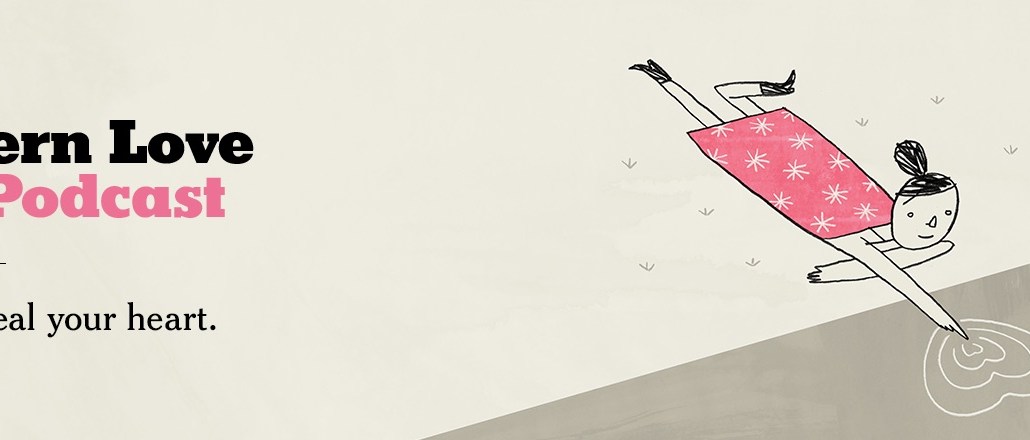Insights from CTV leaders at Dentsu, Horizon Media and more
Why The New York Times finds podcasting to be a ‘natural fit’ for its Modern Love column

The “Modern Love” column, arguably the Internet’s favorite New York Times thing to fight over besides Maureen Dowd, is launching a podcast today.
For the past 11 years, readers have been submitting their relationship tales — from a woman who was having her toes sucked by a near stranger in the backseat of cab or the increasingly fluid boundaries of sexuality spurred by apps — all for the Internet to critique and judge.
Together with Boston’s NPR affiliate, WBUR-FM, the Times is having celebrities such as Jason Alexander and January Jones dramatically read the essays in a weekly series. In all, 48 episodes will be released this year. “Modern Love” is just the fourth podcast currently in production by the Times. USA Today, in comparison, has 20.
The ad-supported podcast episodes last 20 minutes each, are hosted by “Here and Now” anchor Meghna Chakrabarti. Following the reading, there’s a discussion between her, the essay writer and “Modern Love” editor Daniel Jones about how sharing their story for the world to see changed them.
Ahead of its debut, Digiday spoke with Jones about why the column was a “natural fit” to be turned into a podcast. Below are highlights of the interview, edited for clarity.
Why did the New York Times pick the Modern Love column to be a standalone podcast?
This idea originated from WBUR. A couple of years ago, they first contacted me about it, and I’m not sure they knew what they wanted to do with it at the beginning. They were enchanted by the stories and saw an opportunity for an audio version of the story, whether it was a radio show or a podcast. The concept developed into a podcast because that allowed them the freedom to develop it as they wanted it without having time restrictions. It seemed like a natural fit to have it be a podcast.
There’s hundreds of columns to choose from. What makes a column worthy of being turned into a podcast?
We have 600 or so columns to choose from. Some are more dramatic stores than others; some are more about ideas. We wanted a range of voices, young and old and different experiences — similar to the range I strive for in the printed column.
There were some needs for audio that I wasn’t even aware of. I would suggest essays to [WBUR], and they would point out that there was a stretch that really wouldn’t translate to being read aloud that well. It was really how do you hold the listener’s attention.
How do you do that?
Curiosity. What’s going to happen? How is this going to be resolved? Is there a sense of suspense? Some of the stories that we’ve recorded so far, the actor that is reading them and bringing so much emotion to these stories. That’s been the biggest pleasurable surprise to this: seeing how much can be brought to these stories by a skilled actor reading it. That was totally unexpected to me.
Each week a different celebrity reads the column, beginning with “Seinfeld” actor Jason Alexander. How did you match a celeb’s voice to a column?
We’ve been picking out one or two essays that we thought that might resonate with an actor’s voice or experience. In many cases, they wanted to see a bunch. We would send them a couple, they would want to see more and pick something they really connected with. The first selection came from our end, but the real choosing came from their end.
Obviously, people love reading and sharing the column online. Even the two-minute teaser, released last month, shot up to the top of the charts. What is it about “Modern Love” that you think resonates so much?
It becomes a topic of conversation because none of these issues the writers are grappling with have easy answers. These are complicated romantic relationships or long-term loving relationships and things that go wrong with them. People have plenty of opinions, but there’s no right way to navigate a complex human relationship.
What I see on Twitter and on Facebook is that it becomes a point of connection for people who live in different places. Whether they’re college students who used to be together in college and now live in different cities or family members who are spread apart and use it as a weekly point of connection.
Why does the podcast format work for “Modern Love”?
It feels flexible, and it’s exciting how people can choose how gets delivered to them. Ultimately, you’ll know how many people are listening to it. It’s exciting in that way to have what used to be radio broken up to all these little pieces in the same way that TV is being broken up into all these little pieces. It’s fun to stake out your little piece of real estate in that medium and see how it goes. It’s like sending your baby out to the world. Is it going to be loved or not?
More in Media

Digiday+ Research: Publishers pull back their dependence on digital revenue
After a year in which publishers shifted their revenue dependence away from traditional channels and toward digital channels, 2025 has seen a shift back toward more of a balance between traditional and digital revenue sources.

LinkedIn makes it easier for creators to track performance across platforms
Creator data is becoming more accessible to third-party vendors via a new API — another step in LinkedIn’s creator platform evolution.

Ad Tech Briefing: The ‘plumbers’ posing as the unlikely saviors of the internet
After several false dawns, can Cloudflare’s ‘anti-AI scraping tool’ finally offer publishers a road to commercial redemption?





